Manmeet Singh
- July 30, 2024
- 17 min read
- Content Marketing, SEO
- Blog
I. Introduction
II. Creating SEO-Friendly Content
III. The Impact of Content Marketing on SEO Rankings
IV. Common Challenges and How to Overcome Them
V. Tools and Resources for Effective Content Marketing and SEO
VI. Conclusion
I. Introduction to Content Marketing and SEO
In today’s digital landscape, where online visibility can make or break a business, content marketing and SEO have emerged as indispensable tools for success. Understanding their synergy and harnessing it effectively can propel your brand to new heights. Let’s delve into the essence of content marketing and SEO, exploring their definitions, objectives, and benefits.
Defining Content Marketing
What is Content Marketing?
Content marketing encompasses a diverse array of formats, including blog posts, articles, videos, infographics, podcasts, social media posts, and more. The key lies in tailoring content to address the needs, interests, and pain points of your target audience. Whether it’s solving a problem, answering a question, or sparking curiosity, compelling content serves as a bridge between brands and consumers, driving engagement and driving action.
Key Objectives and Benefits
The primary objectives of content marketing are manifold. From increasing brand awareness and driving website traffic to generating leads and nurturing customer loyalty, it’s a versatile strategy with far-reaching implications. By consistently delivering high-quality content that resonates with your audience, you can enhance brand visibility, cultivate brand advocates, and ultimately, drive business growth.
Understanding SEO (Search Engine Optimization)
What is SEO?
SEO encompasses a myriad of techniques and strategies aimed at improving a website’s visibility and relevance in search engine results. At its essence, it’s about understanding the algorithms that govern search engines and optimizing your website and content accordingly. By aligning with search engine best practices and focusing on relevant keywords, you can enhance your chances of ranking prominently for relevant queries.
Key Components and Goals
The core components of SEO include on-page optimization, off-page optimization, and technical optimization. On-page optimization involves optimizing individual web pages to rank higher and earn more relevant traffic. Off-page optimization focuses on building backlinks and establishing authority through external sources. Technical optimization revolves around enhancing the technical aspects of your website to improve its crawlability, indexability, and user experience.
The overarching goals of SEO are to increase visibility, drive organic traffic, and ultimately, boost conversions and revenue. By continuously refining your SEO strategy, monitoring performance metrics, and adapting to evolving search engine algorithms, you can stay ahead of the curve and maximize your online potential.
Content Strategies to Enhance SEO
In the realm of digital marketing, content is king, but when combined with SEO, it becomes an unstoppable force driving organic growth and visibility. Let’s explore effective content strategies tailored to enhance SEO performance and propel your brand to the forefront of search engine results.
Developing a Content Plan
A solid content plan serves as the foundation for successful content marketing efforts. Start by clearly defining your objectives and target audience. Understand their pain points, interests, and preferences to tailor your content strategy accordingly.
Identifying Target Audience and Their Needs
Take the time to research and understand your target audience. What are their demographics, interests, and behaviors? By identifying their needs and challenges, you can create content that resonates with them and addresses their specific concerns.
Creating a Content Calendar
Consistency is key in content marketing. Develop a content calendar to schedule and organize your content creation and publication efforts. This ensures a steady stream of fresh, relevant content that aligns with your SEO objectives and keeps your audience engaged.
Types of Content That Boost SEO
Diversify your content strategy to appeal to different audience preferences and consumption habits.
Here are some types of content that are particularly effective for enhancing SEO:
Blog Posts: Crafting SEO-Friendly Articles
Blog posts are a cornerstone of content marketing. Create high-quality, informative blog posts that target relevant keywords and address common search queries. Optimize your content for readability, relevance, and search intent to improve its ranking potential.
Infographics: Visual Content for Better Engagement
Infographics are highly shareable and visually appealing, making them ideal for capturing attention and conveying complex information in a digestible format.
Videos: Enhancing SEO with Video Content
Video content continues to gain popularity across digital platforms. Create engaging videos that educate, entertain, or inspire your audience. Optimize your videos for search by incorporating relevant keywords into titles, descriptions, and tags, and consider transcribing your videos to improve accessibility and searchability.
Case Studies and White Papers: Leveraging Long-Form Content
Long-form content such as case studies and white papers demonstrate thought leadership and expertise in your industry. Use real-life examples and in-depth analysis to provide value to your audience and attract inbound links from authoritative sources.
Content Distribution and Promotion
Creating great content is only half the battle. Effective distribution and promotion are essential for maximizing its reach and impact. Here are some strategies to consider:
Effective Social Media Sharing Strategies
Share your content across relevant social media channels to amplify its reach and engagement. Tailor your messaging to each platform and encourage sharing and interaction among your audience.
Utilizing Email Marketing for Content Distribution
Email marketing remains one of the most effective channels for content distribution. Build an email list of subscribers who have opted in to receive updates from your brand and regularly share your latest content with them.
Guest Blogging Outreach
Guest blogging is a valuable strategy for expanding your reach and building backlinks to your website. Identify authoritative websites in your niche and reach out to them with well-crafted pitches offering valuable content in exchange for a guest blogging opportunity.
By integrating these content strategies into your SEO efforts, you can create a powerful synergy that boosts your brand’s visibility, credibility, and authority in the digital landscape. Stay consistent, stay relevant, and watch your organic traffic soar.
II. Creating SEO-Friendly Content
In the digital realm, the marriage between content marketing and SEO is paramount for success. Crafting content that not only engages but also ranks well in search engine results requires a strategic approach. Let’s delve into the nuances of creating SEO-friendly content that captivates audiences and climbs the ranks.
Crafting High-Quality, Engaging Content
Quality is the cornerstone of effective content marketing. Aim to produce content that is informative, relevant, and valuable to your target audience. Whether it’s a blog post, article, or video, prioritize substance over fluff to keep your audience engaged and coming back for more.
Writing Compelling Introductions and Conclusions
The introduction sets the stage for your content, while the conclusion leaves a lasting impression. Craft compelling introductions that grab attention and clearly outline what your content has to offer. Similarly, conclude with a strong call to action or thought-provoking summary that encourages further engagement.
Using Storytelling Techniques
Storytelling is a powerful tool for connecting with your audience on a deeper level. Weave narratives, anecdotes, and personal experiences into your content to make it more relatable and memorable. Stories evoke emotions and foster a sense of connection, driving engagement and retention.
Optimizing Content for Search Engines
To ensure your content gets the visibility it deserves, it’s essential to optimize it for search engines. Here are some key strategies to consider:
Crafting Keyword-Rich Headlines and Subheadings
Keywords play a crucial role in helping search engines understand the relevance of your content. Integrate target keywords naturally into your headlines and subheadings to improve search visibility and click-through rates.
Proper Use of Internal and External Links
Linking is an integral part of SEO strategy. Incorporate internal links to other relevant pages on your website to improve navigation and spread link equity. Additionally, include authoritative external links to credible sources to enhance the credibility and trustworthiness of your content.
Creating Optimized Meta Tags and Alt Text for Images
Meta tags, including title tags and meta descriptions, provide concise summaries of your content to search engine users. Craft compelling meta tags that accurately reflect your content and incorporate relevant keywords. Similarly, optimize alt text for images to improve accessibility and provide context to search engines.
Content Formatting and Layout
The way your content is structured and presented can impact its readability and SEO performance. Here are some formatting tips to consider:
Using Headers and Subheaders Effectively
Headers and subheaders break up content into digestible sections and improve readability. Use descriptive header tags (H1, H2, H3, etc.) to organize content hierarchy and incorporate relevant keywords where appropriate.
Implementing Bullet Points and Numbered Lists
Bullet points and numbered lists are effective for presenting information in a concise and scannable format. Use them to highlight key takeaways, steps, or benefits within your content.
Ensuring Proper Use of HTML Tags for SEO
HTML tags provide additional context to search engines about the structure and content of your webpage. Ensure proper usage of title tags, meta descriptions, alt attributes, and other HTML elements to optimize your content for SEO.
By implementing these SEO-friendly content creation strategies, you can elevate your content marketing efforts and improve your brand’s visibility and authority in the digital landscape. Remember, the key is to prioritize quality, relevance, and user experience to drive sustainable results.
III. The Impact of Content Marketing on SEO Rankings
In the dynamic landscape of digital marketing, the symbiotic relationship between content marketing and SEO is undeniable. Let’s explore how content marketing can significantly influence SEO rankings and propel your brand to the top of search engine results pages.
Building Authority and Trust Through Content
High-quality content serves as a cornerstone for building authority and trust with your audience. By consistently delivering valuable, insightful content that addresses their needs and interests.
Earning Backlinks with High-Quality Content
Backlinks remain a crucial factor in SEO rankings, and quality content is one of the most effective ways to earn them organically. When other websites recognize the value of your content, they are more likely to link back to it, signaling to search engines that your content is authoritative and worthy of attention.
Increasing Dwell Time and Reducing Bounce Rates
Dwell time, the amount of time users spend on your website after clicking on a search result, is a key metric that search engines use to gauge the relevance and quality of your content.
Creating Engaging, Relevant Content to Keep Visitors Longer
Engagement is paramount in content marketing. Tailor your content to resonate with your target audience, addressing their pain points, answering their questions, and providing valuable insights. By delivering content that captivates and informs, you can keep visitors on your site longer and encourage them to explore further.
Improving User Experience (UX)
A seamless user experience is essential for both retaining visitors and pleasing search engines. Here are some key considerations for optimizing UX:
Ensuring Easy Navigation and Accessibility
Streamline navigation to make it easy for users to find the information they’re looking for quickly. Implement clear menus, breadcrumbs, and internal linking structures to guide users through your site effortlessly.
By leveraging the power of content marketing to create valuable, engaging content that resonates with your audience, you can significantly impact your SEO rankings and elevate your brand’s visibility and authority in the digital landscape. Prioritize quality, relevance, and user experience, and watch as your rankings soar.
IV. Common Challenges and How to Overcome Them
In the ever-evolving landscape of digital marketing, content marketing and SEO remain a dynamic duo. However, navigating the intricacies of these strategies comes with its fair share of challenges. Let’s explore some common hurdles and effective ways to overcome them to ensure your content marketing efforts align seamlessly with SEO objectives.
Balancing Quality Content with SEO Requirements
One of the primary challenges content marketers face is striking the delicate balance between producing high-quality content and meeting SEO requirements. Focus on creating valuable, engaging content that resonates with your audience, and then optimize it strategically for SEO without compromising its integrity.
Avoiding Keyword Stuffing and Over-Optimization
Keyword stuffing and over-optimization can harm your SEO efforts and detract from the user experience. Instead of cramming keywords unnaturally into your content, focus on incorporating them organically and contextually. Prioritize readability and relevance, ensuring that your content flows naturally while still targeting relevant keywords.
Prioritizing User Experience Alongside SEO
Effective content marketing goes hand in hand with providing an exceptional user experience. While SEO is important for driving traffic, user experience is paramount for retaining visitors and encouraging engagement. Strike a balance by optimizing your website for speed, accessibility, and mobile-friendliness while also incorporating relevant keywords and SEO best practices.
Dealing with Content Saturation and Competition
With the proliferation of online content, standing out amidst the noise can be challenging. To overcome content saturation and competition, focus on differentiation and specialization. Identify niche topics within your industry and create unique, insightful content that fills gaps in the market.
Focusing on Niche Topics and Long-Tail Keywords
Niche topics and long-tail keywords present an opportunity to target specific audience segments and capture valuable search traffic. Research and identify long-tail keywords related to your niche, and create content that addresses niche-specific questions, problems, or interests. By catering to a specialized audience, you can attract highly targeted traffic and establish authority in your niche.
Keeping Up with SEO and Content Trends
The digital landscape is constantly evolving, with new SEO and content trends emerging regularly. To stay ahead of the curve, invest in ongoing education and professional development. Keep abreast of industry news, follow reputable SEO blogs and publications, and participate in relevant forums and discussions.
Adapting Content Strategies to New SEO Trends and Technologies
As new SEO trends and technologies emerge, be prepared to adapt your content strategies accordingly. Embrace innovations such as voice search optimization, AI-driven content creation, and schema markup to stay competitive in the ever-evolving digital landscape. Experiment with new formats, platforms, and technologies to keep your content fresh, relevant, and engaging.
By addressing these common challenges head-on and adopting a proactive, adaptive approach to content marketing and SEO, you can overcome obstacles and unlock the full potential of this powerful partnership. Embrace creativity, innovation, and continuous improvement to drive sustainable growth and success in the digital age.
V. Tools and Resources for Effective Content Marketing and SEO
In the ever-evolving landscape of digital marketing, having the right tools at your disposal can make all the difference in driving success. Let’s explore a selection of essential tools and resources that can streamline your content marketing and SEO efforts, empowering you to achieve optimal results.
SEO Tools
SEO tools are invaluable for optimizing your website’s visibility and performance in search engine results. Here are some essential SEO tools:
Google Keyword Planner
Google Keyword Planner is a powerful tool for conducting keyword research and identifying relevant search terms for your content. By exploring keyword volume, competition, and trends, you can uncover valuable insights to inform your content strategy.
SEMrush/Ahrefs
SEMrush and Ahrefs are comprehensive SEO platforms that offer a wide range of features, including competitive analysis, keyword research, backlink analysis, and more. These tools provide in-depth insights into your website’s performance and help identify opportunities for improvement.
Competitive Analysis and Keyword Research
Both SEMrush and Ahrefs allow you to analyze your competitors’ websites to uncover their top-performing keywords, backlink profiles, and content strategies. Use this information to refine your own SEO strategy and gain a competitive edge in your industry.
Content Creation and Optimization Tools
Compelling content is at the heart of effective content marketing. Here are some essential tools for creating and optimizing content:
Canva/Adobe Spark
Canva and Adobe Spark are user-friendly design tools that enable you to create stunning visual content, such as graphics, infographics, social media posts, and more. With a wide range of templates, graphics, and customization options, these tools make it easy to produce professional-quality visuals for your content.
Creating Visual Content
Visual content is highly engaging and can enhance the impact of your marketing efforts. Use Canva or Adobe Spark to design eye-catching graphics, infographics, and videos that capture your audience’s attention and convey your message effectively.
Analytics and Monitoring Tools
Analytics and monitoring tools are essential for tracking the performance of your content marketing and SEO efforts. Here are some key tools to consider:
Google Analytics/Search Console
Google Analytics provides valuable insights into your website traffic, audience demographics, and user behavior. Google Search Console, on the other hand, offers insights into your website’s search performance, including keyword rankings, click-through rates, and impressions.
Tracking Performance and Gaining Insights
Use Google Analytics to track key metrics such as website traffic, bounce rate, and conversion rate to evaluate the effectiveness of your content marketing efforts. Google Search Console can help you monitor your website’s search performance and identify opportunities for optimization.
By leveraging these essential tools and resources for content marketing and SEO, you can streamline your workflow, gain valuable insights, and optimize your strategies for maximum impact. Whether you’re conducting keyword research, creating visual content, or monitoring performance metrics, these tools empower you to drive success in the competitive digital landscape.
VI. Conclusion
In the realm of digital marketing, the synergy between content marketing and SEO is undeniable. Throughout this exploration, we’ve uncovered the symbiotic relationship between these two strategies and the significant impact they have on each other’s success. Let’s summarize the key points covered:
Summary of Key Points Covered
- Understanding the Partnership: Content marketing and SEO are not standalone tactics but rather complementary forces that work together to drive organic growth, visibility, and engagement.
- Content as the Foundation: High-quality, relevant content serves as the foundation of successful content marketing and SEO strategies. By creating valuable content that resonates with your audience, you can attract organic traffic and build authority in your industry.
- SEO Optimization: Optimizing your content for search engines is essential for improving visibility and ranking higher in search results. Strategic use of keywords, meta tags, and internal linking can enhance your content’s discoverability and relevance.
- User Experience Matters: Prioritizing user experience alongside SEO is crucial for retaining visitors and encouraging engagement. A seamless, intuitive website design and navigation contribute to a positive user experience and can impact your site’s performance in search results.
- Adapting to Challenges: Overcoming common challenges such as balancing quality content with SEO requirements, avoiding keyword stuffing, and staying updated on algorithm changes requires adaptability and strategic thinking.
In conclusion, content marketing and SEO are indeed a perfect match, offering immense potential for brands to increase visibility, drive organic traffic, and achieve sustainable growth in the digital landscape. By leveraging the power of compelling content and strategic optimization, brands can maximize their online presence and establish themselves as leaders in their respective industries with Code & Peddle. Embrace creativity, stay informed, and continuously refine your strategies to unlock the full potential of this powerful partnership.
The following posts may interest you –
FAQs
SEO (Search Engine Optimization) and content marketing work together by ensuring that the high-quality content you produce is optimized for search engines. This optimization improves your content's visibility in search engine results, driving more organic traffic to your website.
Keyword research helps identify the terms and phrases your target audience uses when searching for information related to your industry. Incorporating these keywords strategically into your content makes it more likely to rank higher in search engine results, attracting more relevant visitors.
To maximize SEO benefits, create a variety of content types such as blog posts, infographics, videos, podcasts, e-books, and whitepapers. Ensure each type is optimized with relevant keywords, meta descriptions, and quality backlinks.
Common mistakes include keyword stuffing, neglecting meta descriptions, ignoring mobile optimization, failing to create engaging content, not using internal links, and overlooking the importance of high-quality backlinks.
Focus on creating high-quality, informative, and engaging content that addresses your audience's needs and questions. Use keywords naturally, optimize for readability with proper formatting, include relevant images and videos, and ensure fast load times and mobile compatibility.
















